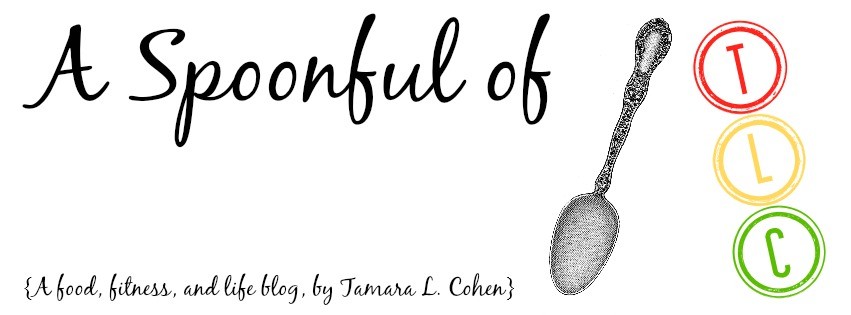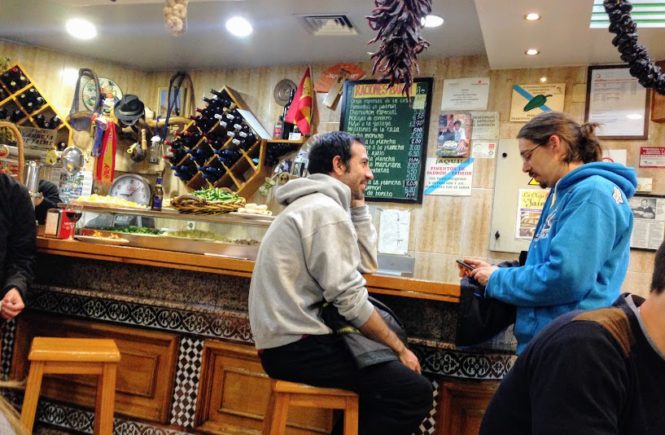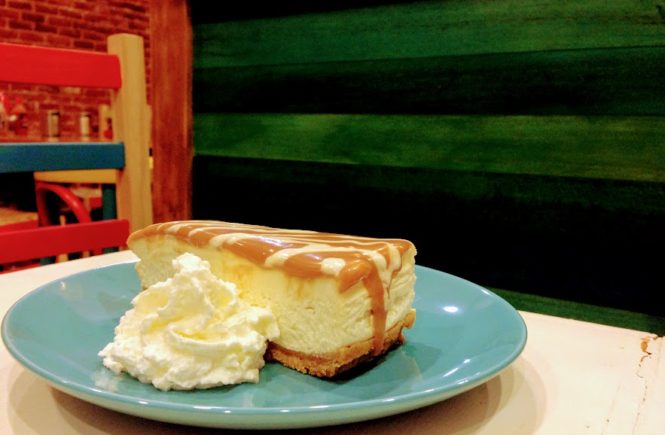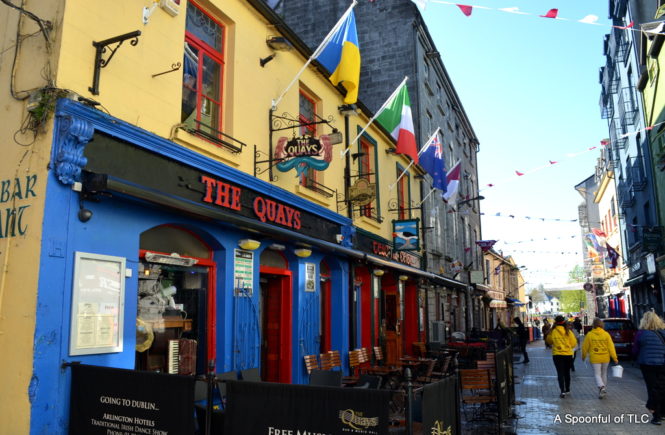There are so many awesome things about Spain (and many… not awesome things) that sometimes I get overwhelmed thinking: this place is awesome and this and this and this and THIS is why. So now, I keep a list in my phone to remind me of the things that make Spain and incredible country to live and work. I thought I would share my list with you all- those of you here in Spain, who can shake your head (slowly, with a side smile) while agreeing, or you might think I’m completely wrong. Either way, let me know what you think!
Ok, so for today, I’m going to tell you about these magical places where old men, women, groups of friends, dogs, and the likes go to hang out. They’re usually grungy, have napkins all over the floor, a couple random game machines, big bowls of olives and plates of tortilla on the counter, and decorated in the most depressing fashion AND they’re awesome.
Let me guess, when I say “cafeteria”, you think:
But no. Cafeterias in Spain are so different from what you knew K-12 growing up. They’re not rowdy places full of pizza and salad bars (but sometimes they can be rowdy, like if there is a futbol game playing). They are these places that can be found all over Madrid. I call them “places” because they are more than a bar (serving more than alcohol or traditional bar food) and less than a restaurant (you can sit down for food, but more in a hang out and have tapas-way).
I’m convinced that the only reason that these places survive is because they are just so completely traditional and inherent to Spanish culture. They are busy early in the morning, with young and old alike, having an espresso at the bar or outside with a cigarette. During the day, they always have people lingering inside, with a caña, or more coffee. Some tapas, possibly. At night, they fill up with friends meeting for a few drinks, olives, pinxos, mixed nuts, chips, more tapas. Sounds good right? But the reason I say that the only reason they survive is because they are traditional is because these places have nothing aesthetically pleasing about them. In a day and age when we like modern, sleek, trendy places, these cafeterias are the bottom of the barrel. The walls are always white, or off-white from age, or possibly- some other neutral color. They hardly have decorations, the floors are covered in dirty napkins (it’s typical to throw your used napkin on the floor, not leave it on the table). When I first went into a cafeteria, my reaction was, “why are we here?”.
But now I love them. I love how they are so bare-bones. I love how their function is to be a place to meet friends, have a quick coffee (with a cigarette if you want to be extra Spanish), how they have “home-cooked” food, and faces from the neighborhood that have likely been there for generations.
Unfortunately, your traditional “cafeteria” would never, ever, in a billion years survive in the U.S. If someone opened a “new” cafeteria, but with the same style as the one’s here in Spain, it would fail before the end of the first week. Like I said before, it’s the history and the tradition that brings people in. It’s meeting your friends at the questionable cafeteria for some beers and year-old chips at the hole-in-the-wall down the street that had been there forever.
My brother having a cafe con leche at a cafeteria. To be extra Spanish, he also had a bocadillo with Spanish tortilla.






